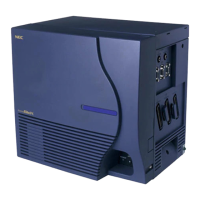Electra Elite IPK II Document Revision 4C
Voice Over Internet Protocol (VoIP) 2 - 1077
Voice Over Internet Protocol (VoIP)
Description
VoIP (Voice over Internet Protocol) allows the delivery of voice information using the Internet protocol
(sending data over the Internet using an IP address). This means that digital voice information can be
sent in packets over the Internet rather than through the traditional public switch telephone network (CO
lines). A major advantage of VoIP and Internet telephony is that it avoids the tolls charged by ordinary
telephone service.
Using VoIP equipment at a gateway (a network point that acts as an entrance to another network), the
packetized voice transmissions from users in the company are received and routed to other parts of the
company intranet (local area or wide area network) or they can be sent over the Internet using CO lines
to another gateway.
3
The VoIP supports the following:
Trunks: IP CCIS, H.323 and SIP Trunks Compressions of G.711, G.723 and G.729
Stations: MEGACO Compressions of G.711 and G.729
Using LANs
Using a LAN setup (local area network) with the Electra Elite IPK II system complies with the Ethernet
standard (10Base-T/100Base-TX).
3. The voice quality of VoIP depends on variables such as available bandwidth, network latency and Quality of Service
(QoS) initiatives, all of which are controlled by the network and internet service providers. Because these variables
are not in NEC control, it cannot guarantee the performance of the user’s IP-based remote voice solution. Therefore,
NEC recommends connecting VoIP equipment through a local area network using a Private IP address.

